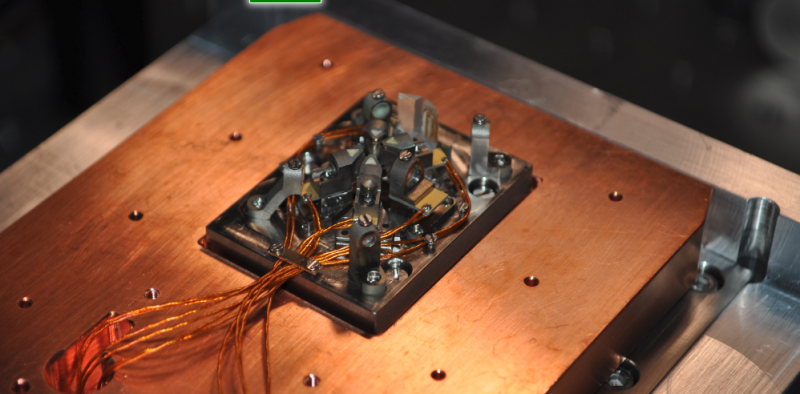Supersolidity is the new state that everyone’s talking about where crystalline structure and frictionless flow happen together. Normally, we refer to the normal states of matter as either a liquid, solid, and gas, but supersolidity is a combination of two of these states where on one hand displays properties of a solid with atoms arranged in a crystalline structure, but on the other hand behaving like a superfluid with particles that move frictionless.
Only recently has supersolidity become recognized as a real state. Previously it was nothing more than a theory. However, Tilman Esslinger, Professor of quantum optics at the Institute of Quantum Electronics, and Tobias Donner, senior scientist at the same institute have changed that with their paper published in the journal, Nature. As part of their study, the pair added a small amount of rubidium gas into a vacuum chamber before cooling it to just above absolute zero. As a result, the atoms condensed into a Bose-Einstein condensate (BEC) and started to behave like a superfluid.

The condensate was placed in a device made up of two intersecting chambers, each with two mirrors opposing one another. It was then hit with a laser beam which caused the atoms of the condensate to form a crystalline structure while still holding on to its superfluid properties also. Esslinger explained, “We were able to produce this special state in the lab thanks to a sophisticated setup that allowed us to make the two resonance chambers identical for the atoms.”
The theory of supersolidity isn’t a new one, and back in 1969, David Thouless realized the same concept that involved a superfluid having a crystalline structure too. It was also agreed upon that the easiest way in which to demonstrate this theory was through helium that had been cooled to a few kelvins above absolute zero. Donner explained, “Our work has now successfully implemented Thouless’s ideas. We didn’t use helium, but a Bose-Einstein condensate.”
More News To Read
- Blue Origin Assemble Long-Awaited BE-4 Rocket Engine
- Could Marijuana Be A Future Treatment for Alzheimer’s?
- Could a Magnetic Shield Be the Answer to Creating a Suitable Atmosphere on Mars?
- Scientists Observe the Most Detailed Black Hole Wind to Date
- The Hubble Shows How Asteroids and Comets are More Alike than We Realized











